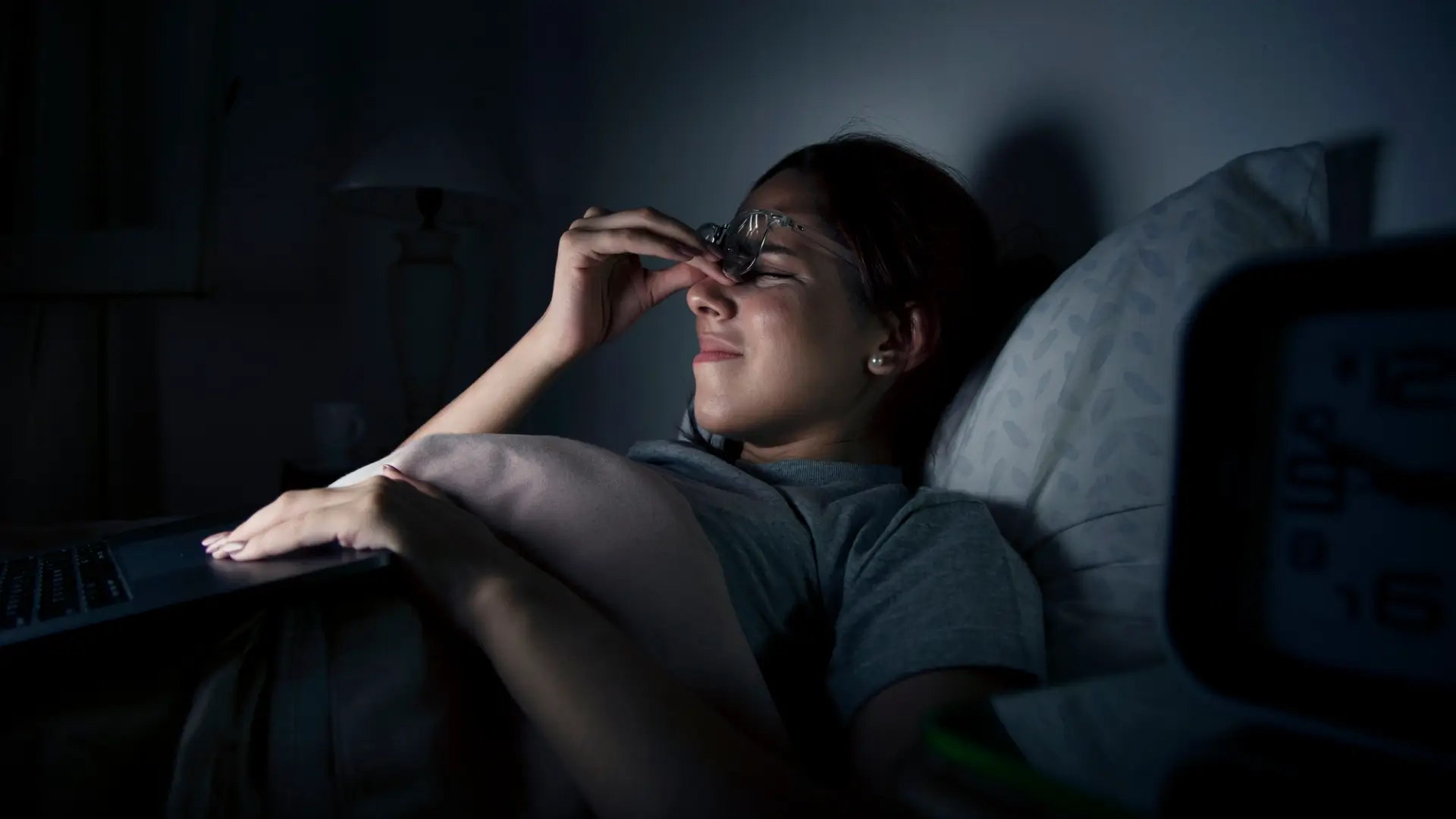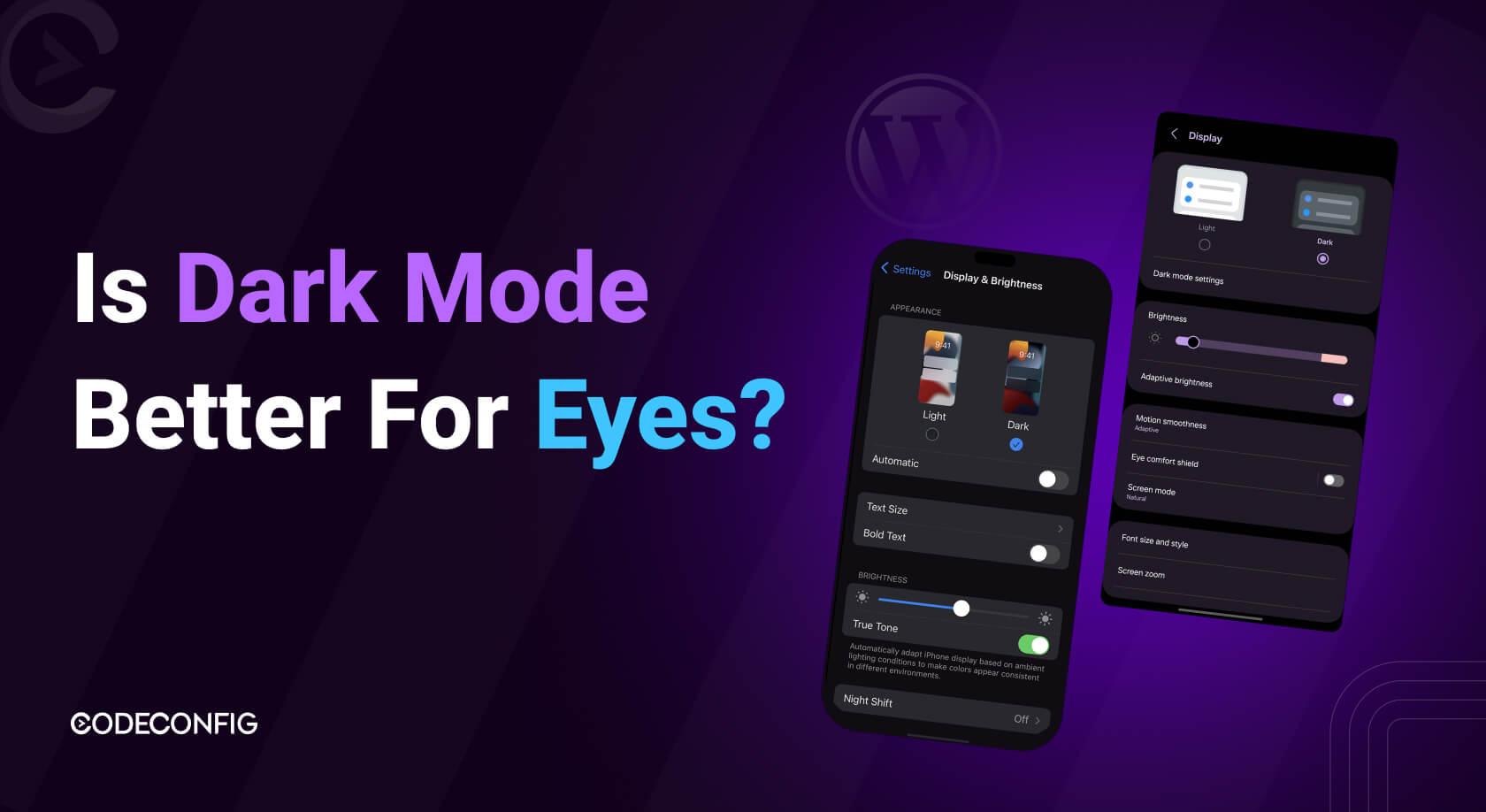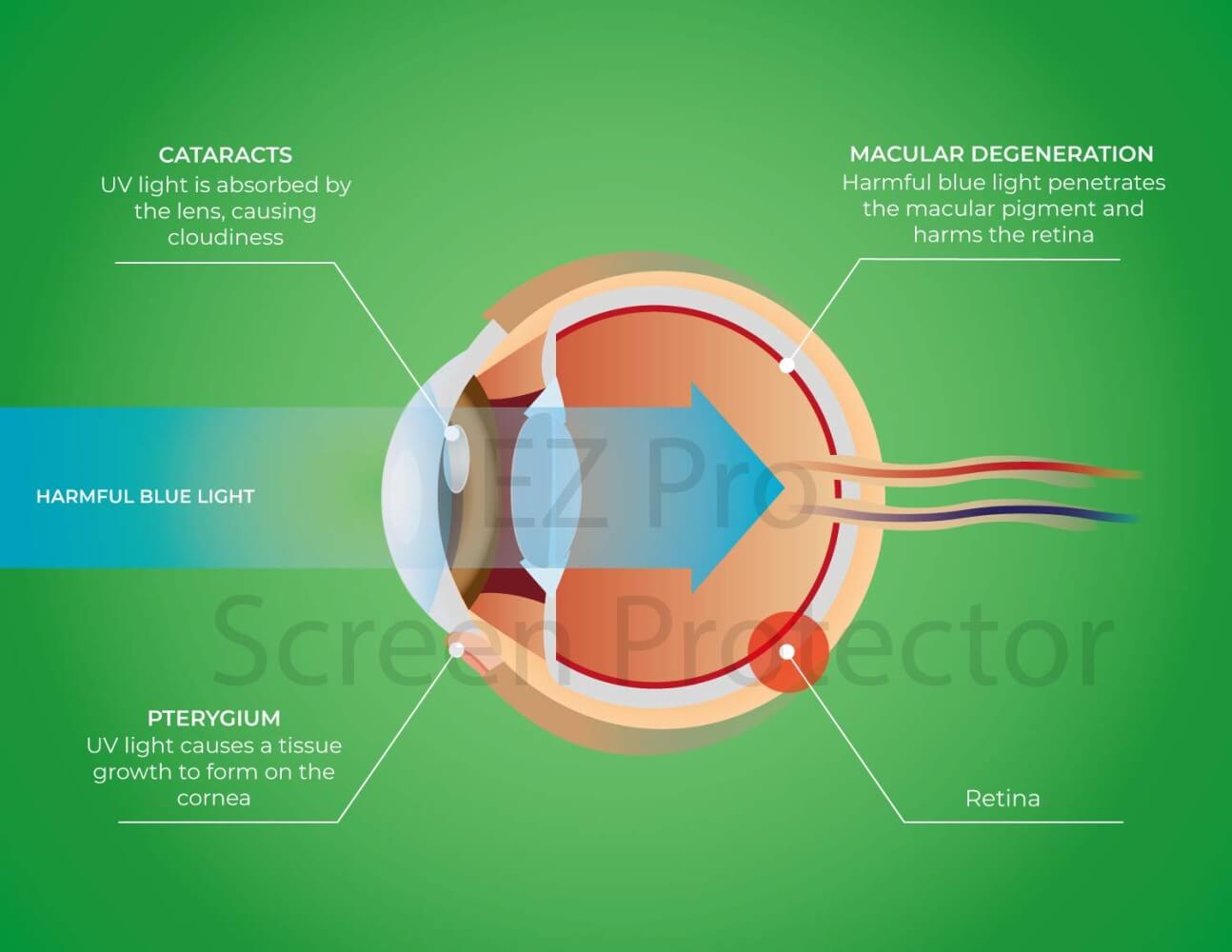


We spend much time looking at screens, phones, computers, tablets, you name it. So, it’s no surprise that people want to know: Is dark mode better for eyes? With its dark background and light Text, dark mode feels cool and easy on the eyes for some. Others like light mode, which looks like a bright page. This blog will explain what science says about dark and light modes, why they matter for your eyes, and how to use them to feel better. Let’s find out which mode is best for you!

Dark mode and light mode are two ways your screen can look. Dark mode has light text, like white or gray, on a dark background, like black. It’s popular for apps like Instagram or when you’re using your phone at night. Light mode has dark text, like black, on a bright background, like white, and it looks like a book page. Both try to make reading easy, but is dark mode better for the eyes all the time? To determine if dark mode is better for your eyes, consider the light around you, how long you use your screen, and how your eyes work.
Your eyes work hard when you stare at screens. Bright screens in dark rooms can make your eyes tired, dry, or sore. This is called digital eye strain. Is dark mode better for the eyes? Dark and light modes change how bright your screen is and how your eyes adjust. Knowing how they work helps you pick the best one for your eyes.

Dark mode has surged in popularity, and it’s easy to see why. Here are the key reasons dark mode might be better for eyes in specific scenarios:
Did You Know? A 2023 survey revealed that 60% of people with astigmatism preferred dark mode in the evening for less eye strain, showing its appeal for specific visual needs.
Light mode might seem old-school, but it’s still a favorite for many. Here’s why light mode can be better for eyes in some cases:
Light mode is best during the day, especially in bright rooms or outside. It’s also good if you’re reading a lot, like studying for a test or working on a report. Light mode can help keep your brain active if you need to stay sharp.
Also Read: Accessibility Plugin for WordPress
Not everyone’s eyes are the same; some eye conditions can make dark or light modes feel better or worse. Let’s look at a few examples:

Are you wondering if dark mode is better for your eyes? The best way to find out is to try both modes. For a week, use dark mode at night and light mode during the day. Notice how your eyes feel. Ask an eye doctor for more advice if you have eye problems like astigmatism.
Also Read: Best Accessibility Plugins For WordPress
Dark mode sounds cool, but there are some wrong ideas about it. Let’s fix those so you know the truth:
Is dark mode better for eyes, or is it just a popular trend? People love dark mode and think it’s a magic fix for eye strain. However, every person’s eyes are different, and what works for one might not work for another. Knowing the facts about dark and light modes helps you choose the best option for your eyes.

Whether dark mode is better for your eyes or you like light mode, you need to take care of your eyes. Here are some simple tips to make screen time easier on your eyes:
Is dark mode better for eyes if it feels too harsh? Try “warm” dark mode themes with gray or brown backgrounds instead of black to reduce strain. You can also move your screen farther away—about an arm’s length—to make your eyes more comfortable. If your eyes still feel tired, check your room’s lighting. A soft lamp behind your screen can make a big difference for eye comfort.

If you’re a WordPress user, you might want to darken your website to help visitors eyes. Is dark mode better for your eyes on your site? You can find out easily with the Dusky Dark Mode plugin! It’s super simple and adds dark mode to your WordPress site with just one click. Dusky offers a dark mode dashboard, over 40 toggle button styles, and more than 15 dark mode color presets to match your site’s look. Let’s explore how to start with Dusky and make your website eye-friendly for everyone.
How to Set Up Dusky Dark Mode:
With Dusky, you can quickly answer the question, “Is dark mode better for eyes?” by giving visitors a comfy, dark-themed experience. Install Dusky today and see how it transforms your site!
So, is dark mode better for the eyes? It’s not a straight yes or no answer. Dark mode rocks at night or in dim rooms because it cuts down bright and blue light, helping your eyes feel less tired. It’s fantastic for late-night texting or binge-watching shows. Light mode shines during the day, especially for reading or staying focused at work or school. You might prefer one mode over another if you have eye issues like astigmatism or sensitive eyes.
The best way to determine whether dark mode is better for your eyes is to test both. Try dark mode at night and light mode in the day for a few days. Notice how your eyes feel. Also, use the eye care tips we shared, like taking breaks, blinking more, and tweaking brightness. Your eyes are unique, so what works for your friend might not work for you. By experimenting, you can create the perfect setup to keep your eyes happy and healthy, no matter which mode you choose.
Yes, on OLED screens, dark mode can save 3–9% battery at low brightness or up to 40% at full brightness, as black pixels use less power. Is dark mode better for eyes too? It may reduce strain in dim light, but brightness and breaks matter more for eye comfort.
Is dark mode better for eyes in dark rooms? Yes, it can help by reducing bright light and glare, making your eyes less tired. It also cuts blue light, which might help you sleep better. But it’s not a fix for all eye strain—taking breaks and adjusting brightness are super important too.
Is dark mode better for eyes than light mode? It depends! Dark mode is often better at night because it’s less bright and easier on your eyes in low light. Light mode is excellent during the day or for reading, as it matches sunlight and feels clearer. Try both to see what works best for you.
No, it doesn’t! Some wonder if dark mode is better for eyes or harmful, but it’s safe. Reading in bright rooms might feel harder due to less clear contrast, but it’s not bad for you. If dark mode feels uncomfortable, switch to light mode or adjust your screen’s brightness.
For some people with astigmatism, dark mode can feel better at night because it’s less harsh. However, others might find light mode easier to read during the day, as dark mode’s high contrast can look blurry. Test both modes and talk to an eye doctor if you’re unsure.
Yes! Dark mode uses less power on phones or tablets with OLED screens because dark pixels need less energy. This can make your battery last longer, which is great if you use your device all day.
Wondering if dark mode is better for eyes with tweaks? Try these tips: use a warm-toned dark mode (like gray instead of black), make text bigger, and adjust contrast in your device settings. Blue light filter glasses or your phone’s night mode can help too.
Dive into our top-rated plugins that make your work smoother and better! Upgrade your experience with ease and creativity.
We use cookies for a better experience with relevant content and suggestions. Learn more
Written By
CodeConfig
CodeConfig is a WordPress plugin development company focused on building powerful, user-friendly tools to simplify your workflow. From Dropbox integrations to cart managers and dark mode features, we help WordPress users save time, space, and stress.
Express Your Opinion